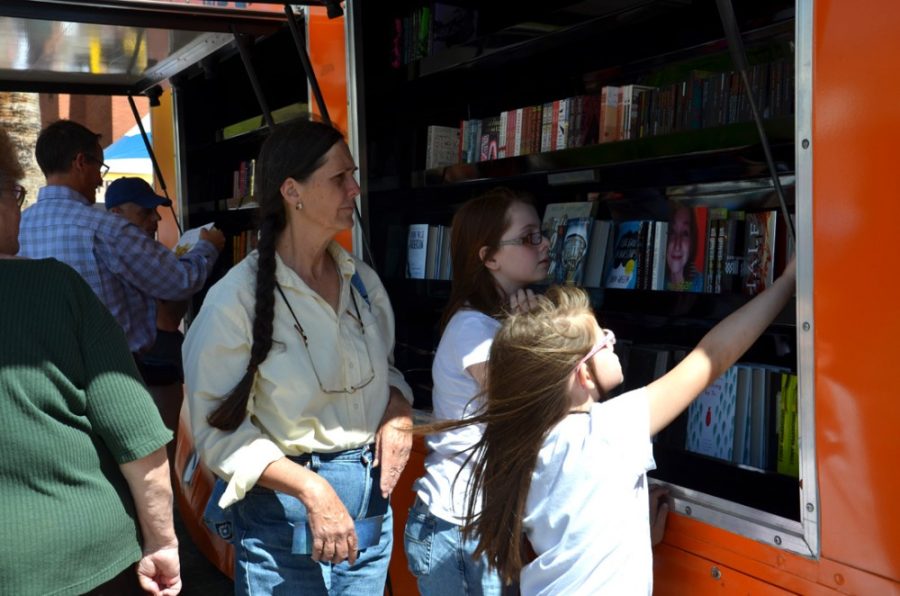At the Science City at the Tucson Festival of Books, the science of everyday life and the science of tomorrow are only a few booths away. Over 150 participants from the UA, Biosphere 2, OSIRIS-REx and many other clubs, departments and organizations will gather together to share their science with the general public,
“I believe that Science City exposes people of all ages, but especially children, to the amazing science that takes place at the UA and in the Tucson area,” said Elliott Cheu, executive committee co-chair of Science City and UA physics professor. “This allows us to demonstrate the relevance of the research activity on the UA campus to the Southern Arizona community.”
Even though it’s held at the UA and many of the volunteers and coordinators are affiliated with the UA, it isn’t just a UA event — it’s a community event, said Erin Deely, the science stage liaison for Science City and assistant director of recruitment and engagement at the UA.
The emphasis is on hands-on interactive activities and science literacy.
This year, one big focus is on making math approachable and fun. One of the “worlds” available is “Science of Pi.” March 14 is Super Pi Day and Albert Einstein’s birthday. There’s a plan in the works to make a circle with the digits of pi using a coordinated series of volunteers.
Other options allow for more hands-on activities and kid-friendly fun. The Biochemistry Club is having a “Science of You” tent with activities that include making lung models out of water bottles to show the breathing process.
Another option is the Brainworks booth, which has activities and information about the brain for all ages. Small children can make neurons out of pipe cleaners, and those who don’t want to keep theirs can use it to help create a giant neural network. There will also be a “brain zoo” with a variety of preserved animal brains and information on brain injuries and disorders.
“I love seeing people delighted about the brain, and they almost always want to know more,” said Lynne Oland, a neuroscience research professor and one of the coordinators for the Brainworks booths. “It’s good to send people away wanting more.”
This section alone will take around 80 volunteers to run, which is a small portion of the 1,100 people, according to Deely, who staff all that’s happening.
It’s not just the clubs and groups in Science City on display; many UA areas are open for tours, including the Laboratory of Tree-Ring Research, Flandrau Science Center and Planetarium and the Steward Observatory Mirror Lab.
“It’s really our attempt to have a STEM open house,” Deely said.
They are also trying to ensure that the festival is open to all. School groups are bused in to ensure that under-served communities have access to the festival. People who typically would not hear about the festival or be able to attend have a way to come and experience everything, Deely said.
According to Deely, the event has a huge reach, with over 30,000 people going through Science City in two days. This may only be two days, but it is connected to other opportunities throughout the year. The Science City Visitor Center volunteers give out information about the other camps and events throughout the year that can extend learning and outreach, Deely said.
Science City is happening Saturday and Sunday, and everyone is welcome to attend.
“Just learn, just be exposed [and] have fun,” Deely said.
_______________
Follow Amy Nippert on Twitter.









